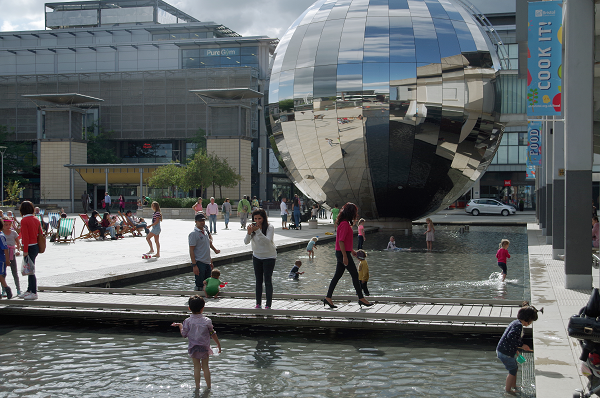
A live 5G-based proof of concept to test smart urban applications over next-generation mobile networks will be deployed in the centre of UK city Bristol in March 2018, as part of a joint research programme between the University of Bristol, BT and Nokia.
At a briefing in London this morning, Cormac Whelan, CEO of Nokia UK and Ireland, argued 5G is fundamentally different from its predecessors because it is driven by use cases, the end users and their requirements.
He believes the test in Bristol is the beginning of making the UK a key test bed for the technology, attracting investment and driving whole industries “on the back of 5G”.
Dimitra Simeonidou, professor of high performance networks at the University of Bristol, said around 5,000 people are expected to attend demonstrations of 5G on 17 and 18 March, when the public will be able to interact with robotics, connected cars and bikes, and gaming. The demos will be a true test of the kind of low latency which will be required to make 5G a reality.
She said there will, of course, be performance monitoring and KPIs embedded into the demo, but because 5G is still in its early stages the idea is not to focus too much on the reliability of network.Instead, attention will be on the reliability of service – how 5G, 4G and Wi-Fi can work together to give the “always connected” feeling, using legacy systems.
Neil McCrae, chief architect at BT, said the demo will give the operator the opportunity to learn how it can expand its mobile network and a more specific sense of what 5G can be used for, whether enabling more M2M communications, using drones to deliver urgent packages or improve emergency services networks.
“We’re gaining a real world understanding of how 5G can be used within dense urban environments. This is crucial to building meaningful use cases for future macro-scale 5G networks. 5G is teaching us that collaboration is essential.”
Paul Crane, head of practice for Mobile, Network Services and Sustainability at BT, added the test will give the operator an idea of “what you need to stick into a network” to achieve higher bandwidth and lower latency.
For him, an interesting use case would be creating droneways (like highways) to swiftly deploy equipment to BT’s remote base stations.
Simeonidou added: “The idea is to disseminate what we learn to the rest of the UK and create a national asset.”
How it will work
The test network will run over Bristol City Council’s dedicated fibre infrastructure around the city’s Millennium square and combine the university’s research expertise with Nokia’s 5G network systems and radio access points, and BT spectrum.
The university’s Smart Internet Lab recently received funding from a UK government fund – the 5G Testbeds and Trials Programme – which will be used to establish the network.
In the coming months, the test network will be used to explore and validate the deployment of 5G architecture which integrates existing technologies with innovations including Massive MIMO radio access solutions, software-defined networking, network slicing and edge computing node functionalities.
The initial deployment will examine the optimum models for 5G as part of a future dense urban network, which will maximise coverage and speed, using a combination of research and commercial solutions including Nokia’s AirScale and AirFrame infrastructure.
Future activity will focus on the use of 5G as an enabler of IoT technologies, examining areas such as immersive tourism and connected transport.
In time, the initial test bed will be expanded throughout Bristol and other cities in the region.
